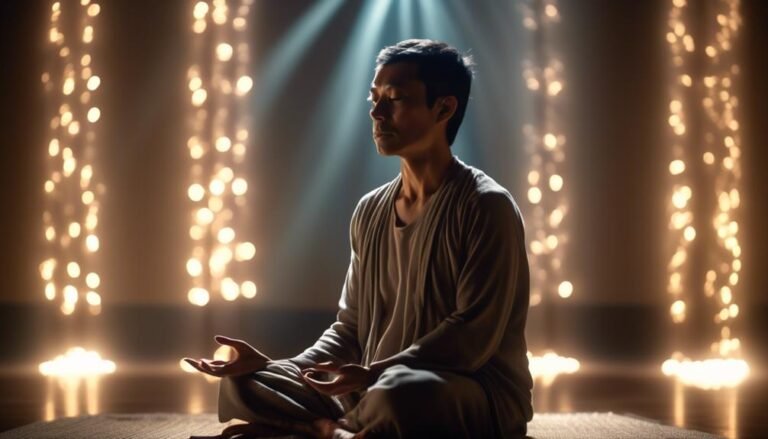The Importance of Non-Verbal Communication in Interviews
|
Getting your Trinity Audio player ready...
|
Non-verbal communication plays a crucial role in interviews, often conveying more about a candidate than their words alone. From body language to eye contact, every non-verbal cue sends a message to the interviewer. Understanding and mastering these cues can significantly impact the outcome of an interview.
It's not just about what you say, but how you say it, and the non-verbal signals you send can speak volumes about your confidence, professionalism, and ability to build rapport. In today's competitive job market, harnessing the power of non-verbal communication is essential for making a lasting impression and standing out among other candidates.
Key Takeaways
- Non-verbal communication significantly influences the perception of candidates in interviews.
- Open and relaxed body language, along with appropriate eye contact, convey confidence and professionalism.
- Cultural differences should be considered when interpreting non-verbal cues in interviews, particularly regarding eye contact and facial expressions.
- Non-verbal cues such as posture, eye contact, facial expressions, and gestures can enhance or detract from the impression of confidence and professionalism.
Impact of Body Language
The impact of body language in interviews can significantly influence the perception and evaluation of a candidate's suitability for a position. Non-verbal communication awareness is crucial in understanding the unspoken cues that candidates exhibit during an interview. Employers and interviewers often pay close attention to body language interpretation, as it can reveal valuable insights into a candidate's confidence, honesty, and professionalism.
Candidates who display open and relaxed body language, such as maintaining good posture, making appropriate eye contact, and using natural gestures, are often perceived as more confident and self-assured. On the other hand, candidates who exhibit closed-off body language, such as crossing arms, avoiding eye contact, or fidgeting nervously, may be perceived as less confident or even disinterested.
It is important for both interviewers and candidates to be aware of the impact of body language during interviews. Candidates should strive to project positive and confident body language, while interviewers should be mindful of their own body language to ensure a welcoming and receptive environment. Understanding and interpreting body language can provide valuable insights into a candidate's demeanor and suitability for a role.
Importance of Eye Contact
Paying close attention to candidates' non-verbal cues, such as body language, allows interviewers to gain valuable insights into their demeanor and suitability for a role. In particular, the importance of eye contact in interviews cannot be understated.
Eye contact benefits communication by signaling confidence, attentiveness, and honesty. It fosters a sense of connection and trust between the interviewer and the candidate, creating a positive impression. However, cultural differences can influence the interpretation of eye contact.
In some cultures, prolonged eye contact may be seen as confrontational or disrespectful, while in others, it is a sign of respect and engagement. Therefore, interviewers should be mindful of these cultural nuances and adapt their expectations accordingly.
Non-verbal cues, including eye contact, can also present communication challenges. Some candidates may struggle with maintaining eye contact due to nervousness or cultural differences, which could lead to misinterpretations of their confidence or honesty. In such cases, interviewers should consider the broader context and rely on a combination of non-verbal cues to form a comprehensive assessment.
Power of Facial Expressions
Facial expressions play a significant role in non-verbal communication during interviews, conveying a candidate's emotions, reactions, and engagement. The power of facial expressions lies in their ability to reveal a candidate's emotional intelligence, which is a crucial asset in the workplace.
Effective use of facial expressions can demonstrate empathy, understanding, and attentiveness, all of which are highly valued in professional settings. However, it's important to note that interpreting facial expressions requires an understanding of non-verbal cues and the cultural differences that may influence them.
For instance, a smile may convey warmth and friendliness in one culture, while in another, it might indicate nervousness or discomfort. Therefore, interviewers need to approach the assessment of facial expressions with sensitivity and cultural awareness.
Likewise, candidates should be mindful of how their expressions might be perceived across different cultural contexts. By recognizing the power of facial expressions and understanding their role in non-verbal communication, both interviewers and candidates can enhance their ability to effectively convey and interpret emotions during interviews.
Role of Posture in Interviews
The role of posture in interviews is a critical aspect of non-verbal communication that significantly impacts the impression a candidate makes. Body language, including posture, can convey confidence, authority, and presence, all of which are essential in making a positive impression during an interview.
Understanding the influence of posture and leveraging it effectively can greatly enhance an individual's communication and overall performance in an interview setting.
Body Language Impact
Adopting the appropriate posture during an interview is crucial for conveying confidence and professionalism to the interviewer. Non-verbal cues, such as body language, play a significant role in shaping first impressions, which can greatly impact interview success.
Consider the following points to understand the importance of posture in interviews:
- Confidence Projection: A good posture, with an upright stance and open body language, conveys confidence and self-assuredness, positively influencing the interviewer's perception.
- Professional Demeanor: Maintaining a proper posture signals that the candidate takes the interview seriously and is attentive, reflecting a professional demeanor.
- Communication Enhancement: Body language, including posture, can complement verbal communication and help in effectively articulating the candidate's suitability for the role.
Mastering the art of adopting the right posture can significantly enhance one's chances of making a positive impact during interviews.
Confidence and Presence
Demonstrating a poised and confident posture is pivotal in projecting professionalism and self-assuredness during interviews, significantly influencing the interviewer's perception of the candidate.
Assertive body language, such as sitting upright, leaning slightly forward, and maintaining eye contact, conveys confidence and competence. These non-verbal cues signal to the interviewer that the candidate is engaged, attentive, and self-assured.
Additionally, vocal tone and pitch play a crucial role in portraying confidence and presence. Speaking in a clear, steady voice with a moderate pitch exudes confidence and professionalism. Conversely, a shaky or overly high-pitched voice can undermine the impression of confidence.
Therefore, mastering assertive body language and vocal tone is imperative for creating a positive first impression and effectively communicating confidence and presence in interviews.
Understanding Gestures and Movement
Understanding gestures and movement in interviews is crucial for both interviewers and interviewees. Body language cues can convey confidence, engagement, or nervousness, impacting the overall impression.
Additionally, the impact of posture on non-verbal communication should not be underestimated, as it can influence the perceived level of professionalism and attentiveness.
Body Language Cues
An individual's body language, including gestures and movement, plays a significant role in non-verbal communication during interviews, providing valuable insights into their attitudes and emotions.
- Non-Verbal Cues: Body language cues are essential for interview success, as they often convey more about a candidate's true feelings and intentions than verbal responses.
- Interview Success: Understanding and interpreting body language can greatly enhance communication effectiveness during interviews, enabling interviewers to assess a candidate's confidence, honesty, and level of engagement.
- Communication Effectiveness: By being attuned to body language cues, interviewers can create a more comfortable and open environment, promoting better communication and understanding between themselves and the interviewee.
Understanding these non-verbal cues can significantly impact interview success, making it imperative for both interviewers and interviewees to be aware of the messages conveyed through body language.
Impact of Posture
The role of posture in non-verbal communication during interviews is pivotal, as it provides valuable insights into a candidate's attitudes and emotions, complementing the understanding gained from body language cues.
Posture impact on interview success is significant, as it can convey confidence, professionalism, and interest in the position. Non-verbal cues such as sitting upright, leaning slightly forward, and maintaining eye contact can display confidence and engagement, positively influencing the interviewer's perception.
Conversely, slouching or fidgeting may indicate nervousness or disinterest, potentially hindering the candidate's success. Therefore, it is crucial for interviewees to be mindful of their posture, ensuring it aligns with the message they aim to convey.
Interpreting Non-Verbal Cues
Non-verbal cues in interviews can provide valuable insights into a candidate's demeanor and level of engagement. Understanding and interpreting these cues is essential for interviewers to make well-informed hiring decisions.
When analyzing non-verbal cues in interviews, it's important to consider:
- Non-verbal cues in negotiation: During an interview, non-verbal cues can offer indications of how a candidate may handle negotiation situations. For example, their eye contact, body language, and hand gestures can reveal their confidence and assertiveness, which are crucial traits in negotiation scenarios.
- Cultural differences in non-verbal communication: Different cultures have varying norms and interpretations of non-verbal cues. It's crucial for interviewers to be mindful of cultural differences in non-verbal communication to avoid misinterpreting a candidate's behavior. For instance, gestures, personal space, and eye contact can hold different meanings across cultures, and being aware of these differences can prevent misunderstandings during the interview process.
- Consistency and context: When interpreting non-verbal cues, it's essential to consider the consistency of the candidate's behavior and the context of the interview. A single non-verbal cue may not provide a complete picture, so observing patterns of behavior and considering the interview environment is crucial for accurate interpretation.
Non-Verbal Communication and Confidence
Understanding the impact of non-verbal communication on conveying confidence in interviews is crucial for assessing a candidate's overall suitability for a role. Non-verbal cues play a significant role in forming first impressions and can greatly influence the perception of a candidate's confidence. Confidence is conveyed through non-verbal signals such as posture, eye contact, facial expressions, and gestures. These cues are particularly important in the initial stages of an interview when the interviewer forms the first impression of the candidate.
Confidence and non-verbal signals are closely intertwined. A candidate who maintains good posture, makes consistent eye contact, and uses appropriate gestures is more likely to be perceived as confident. On the other hand, fidgeting, avoiding eye contact, or displaying closed-off body language can detract from the impression of confidence.
It's essential for both interviewers and candidates to be aware of these non-verbal cues, as they can significantly impact the overall assessment of the candidate's suitability for a role.
Non-Verbal Communication and Professionalism
Non-verbal communication plays a significant role in conveying professionalism during interviews. Body language signals, such as maintaining good posture and using appropriate hand gestures, are crucial in demonstrating professionalism and confidence.
Additionally, attention to dress and grooming, as well as maintaining consistent eye contact, further contribute to creating a professional impression.
Body Language Signals
Professionals should be mindful of their body language signals during interviews as they can significantly impact the impression they make on potential employers.
It is important to consider non-verbal communication, as cultural differences can influence interpretations of body language.
Some key body language signals to consider include maintaining good posture, making eye contact, and using appropriate hand gestures.
Additionally, being aware of nervous habits such as fidgeting or avoiding eye contact is crucial.
Understanding the impact of body language on the interviewer's perception is essential in projecting confidence and professionalism.
Dress and Grooming
When it comes to making a positive impression in an interview, the way a professional dresses and grooms themselves can speak volumes about their professionalism and attention to detail. Dress code and grooming standards are critical components that contribute to the formation of first impressions and personal branding. A well-thought-out attire reflects respect for the interview process and the company. It is essential to adhere to the dress code of the industry and company while also showcasing personal style within those parameters. Grooming standards, including personal hygiene and appropriate grooming, also play a significant role in shaping the overall impression. The table below summarizes the key aspects of dress and grooming in the context of interviews.
| Aspect | Importance | Impact |
|---|---|---|
| Dress Code | Reflects respect and style | Influences first impressions |
| Grooming Standards | Reflects personal hygiene | Contributes to personal branding |
Eye Contact Importance
The significance of maintaining appropriate eye contact during interviews cannot be overstated, as it serves as a powerful non-verbal communication tool that conveys professionalism and confidence.
When it comes to eye contact, several factors should be considered, including:
- Eye contact techniques: Employing the 'triangle technique,' where you shift your gaze between the interviewer's eyes and the space between their eyebrows, can help create a sense of connection without appearing confrontational.
- Cultural differences: It's important to be aware that acceptable levels of eye contact vary across cultures, with some cultures valuing prolonged eye contact as a sign of respect, while others perceive it as confrontational.
- Non-verbal communication and interview anxiety: Maintaining steady eye contact can also help alleviate interview anxiety, as it portrays assurance and attentiveness.
Mastering the art of appropriate eye contact can significantly enhance your non-verbal communication during interviews.
Non-Verbal Communication in Building Rapport
Developing rapport through non-verbal communication is an essential aspect of effective communication in interviews. Building connections through non-verbal rapport involves the use of various non-verbal cues such as body language, facial expressions, and gestures to establish a sense of trust, understanding, and mutual respect between the interviewer and the interviewee. Non-verbal communication in building rapport is particularly crucial as it sets the tone for the entire interview and can significantly influence the overall dynamics of the interaction.
Effective non-verbal communication in building rapport involves maintaining appropriate eye contact to convey attentiveness and interest, using open and welcoming body language to create a comfortable and approachable atmosphere, and mirroring the non-verbal cues of the interviewer to establish a sense of connection and understanding. Additionally, being mindful of non-verbal cues such as nodding in agreement, smiling, and using appropriate hand gestures can further enhance the establishment of rapport.
Using Non-Verbal Cues to Convey Enthusiasm
How can non-verbal cues effectively convey enthusiasm during an interview?
Non-verbal communication techniques play a crucial role in conveying enthusiasm during an interview. When used effectively, these cues can leave a lasting impression on the interviewer, showcasing the candidate's passion and interest in the role.
Here are some key non-verbal communication techniques that can help convey enthusiasm:
- Smiling: A genuine smile can instantly convey enthusiasm and positivity, creating a warm and engaging impression on the interviewer.
- Eye Contact: Maintaining good eye contact demonstrates confidence and enthusiasm. It shows that the candidate is attentive and genuinely interested in the conversation.
- Body Language: Using open and engaged body language, such as leaning slightly forward, nodding, and using hand gestures, can convey energy and enthusiasm. It's important to avoid slouching or appearing disinterested, as this can overshadow verbal enthusiasm.
Conclusion
In conclusion, the impact of non-verbal communication in interviews cannot be overstated. From body language to eye contact, facial expressions, posture, gestures, and movement, these cues play a crucial role in conveying confidence, professionalism, and building rapport with the interviewer.
Utilizing non-verbal cues effectively can greatly enhance the candidate's chances of leaving a lasting and positive impression in the interview process, ultimately leading to greater success in securing the desired position.







